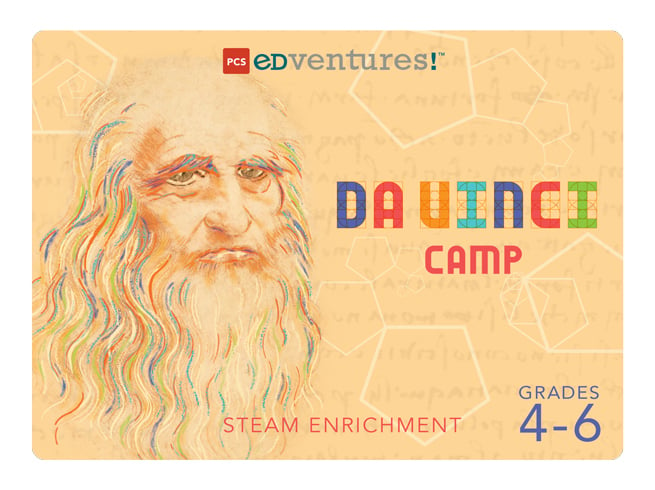
SMart Engineering: The Intersection of Science, Math and Art
SMart Engineering: The Intersection of Science, Math and Art
In the ever-evolving landscape of technology and innovation, an important synergy exists between science, mathematics and art in the field of engineering. STEM employers are quickly discovering what educators have known all along—the importance of integrating the arts into STEM.
Forward-thinking tech giant Google recognizes the power of this creative fusion. By encouraging employees to spend up to 20% of their time on artistic pursuits, Google has unlocked a treasure trove of innovative solutions including Google’s most popular innovations, Gmail and Google Street View: “They will delight you with their creative thinking” says, Gopi Kallayil, Chief Business Strategist at Google.
Educators recognize the importance of creating time and space for scientific, mathematical and technical thinking as well as creative thinking through the shift from STEM to STEAM programming. Teams composed of mathematicians, scientists and artists bring diverse perspectives, fostering creativity and innovation.
What do STEMISTS and ARTISTS have in common?
21st Century Skills
Leonardo Da Vinci, one of the greatest artists and engineers in history, consistently integrated creative, scientific and mathematical ideas. Da Vinci wisely stated, “Art is the queen of all sciences communicating knowledge to all the generations of the world.”
STEMists and artists share many 21st century skills essential for success in their respective disciplines. These skills are the foundation of SMart engineering.
STEMists and Artists:- Demonstrate curiosity about the world around them.
- Embrace risks without fear.
- Seek unique and creative ways to solve problems.
- Communicate through a variety of means.
- Collaborate to understand new concepts.
- Thrive in quests for the new and undiscovered.
Habits of Mind
STEMists and artists observe the world around them, pondering “How?” and “Why?” Nurturing these Habits of Mind leads to SMart engineers.
“To become an artist, you have to be curious.” ― Leonardo Da Vinci
Responding with Wonderment and Awe:
Leonardo Da Vinci noted, "To become an artist, you have to be curious." The same holds true for a scientist, mathematician or engineer — curiosity is essential. Art and science share the power of observation. All explorations start with an observation followed by a question.
Children are naturally curious about the world around them. How can we cultivate this curiosity? Encourage learners to keep a notebook for ideas and sketches and create time and space in the learning process for observation and wonder. Time spent in wonderment and awe is time well spent.

PCS Edventures offers a variety of programming options to engage learners with thought-provoking STEAM activities that will keep curiosity alive. One of our favorites, Da Vinci Camp, is a complete STEAM solution that provides over 12 hours of STEAM programming. The activities encourage learners to hone observation skills in a variety of hands-on, learner-centered activities.
Asking Questions and Posing Problems:
During the early years, children are often highly curious and ask numerous questions. They are in the process of exploring the world around them and asking questions is a natural way for them to learn and make sense of their environment. Why do learners stop asking questions? Is it because they lose interest in the world around them? No. According to an article in Newsweek, “They lose interest because they stopped asking questions.”
Questions give the brain a chance to think about how and why something works. How can we keep learners engaged in the inquiry process? One way is to challenge learners to ask questions about everything that interests them. Start with “why” questions. Learners brainstorm a list of questions starting with the word “why.” These types of questions lead to explanations of the world around them. Next, guide learners in writing a list of “how” questions. This type of questioning is beneficial to engineers and scientists. Finally, encourage “what if” questions. “What if” questions encourage dreaming and thinking outside the box.
Another way to cultivate curiosity in your learners is to start each day with a simple “I wonder, I notice” exercise. Encourage your learners to ask questions and make observations. This exercise can be completed in less than five minutes. Consider showing a short video clip, image or real-life object. Ask learners to write questions and observations. Take a few minutes to share. Watch as learners enthusiastically piggyback on each other’s ideas. This fosters opportunities to practice both questioning and observational skills, thereby expanding and deepening thinking. Questions are useful tools that engineers, scientists, mathematicians and artists use to define problems and clarify ideas.
Fine-tuning the skill of asking questions enables learners to solve problems, think critically and be more aware of the world around them. The skill of asking questions blends critical and creative thinking that enables engineers to flourish.
Applying Past Knowledge to New Situations:
STEMists and artists look for ways to apply past knowledge to new situations. They make connections and identify patterns between a previous problem and a current one. Engineers frequently face the challenge of identifying, discovering and creating solutions for real-world problems. Meanwhile, artists are often tasked with perceiving the world through different eyes. The blending of the world of STEM and the world of art will result in creative, innovative solutions.
In PCS Edventures’ Da Vinci Camp, we learn how Da Vinci masterfully merged the worlds of science, technology, math and art to become a SMart engineer. He identified patterns and connections across disciplines that led to many discoveries and innovations.
Promoting thinking such as “I wonder, I notice” and “I connect” will catapult both STEMists and artists into creative thinking, problem-solving and innovation. In Da Vinci Camp, we’ve done all the leg work for you by producing all the assets needed for your learners to thrive as SMart engineers.
The Harmony of STEM and Art
There is a beautiful harmony between the world of art and the world of STEM. Both worlds focus on exploration, experimentation and new discoveries. The line of demarcation between the world of STEM and the world of art is blurring. By integrating the concepts and practices of the arts, soft skills of collaboration, communication and flexibility will enhance engineers' abilities to solve problems in more innovative ways. Engineers will be “SMarter” when they combine science, math and art. The true beauty of SMart Engineering lies in the seamless integration of these three disciplines.
Unlock a wealth of ideas that seamlessly blend science, math, and art with Think Like a STEMist – an exclusive, complimentary resource accessible to PCS Edventures' subscribers. Elevate your learning environment with ten captivating STEAM activities. Subscribe now and embark on a journey into the world of STEAM!


Author: Kim Turner
A life-long learner and lover of education, Kim has 30 years of education experience with STEM labs, gifted and talented courses and more!
References
Po, B., & Merryman, A. (2014, January 23). The creativity crisis. Newsweek. https://www.newsweek.com/creativity-crisis-74665 Leong, K. C. (2013, November 20).
Google reveals its 9 principles of innovation. Fast Company. https://www.fastcompany.com/3021956/googles-nine-principles-of-innovation Maeda, J. (2013, July 11).
Artists and scientists: More alike than different. Scientific American Blog Network. https://blogs.scientificamerican.com/guest-blog/artists-and-scientists-more-alike-than-different/








